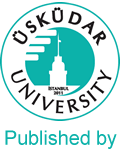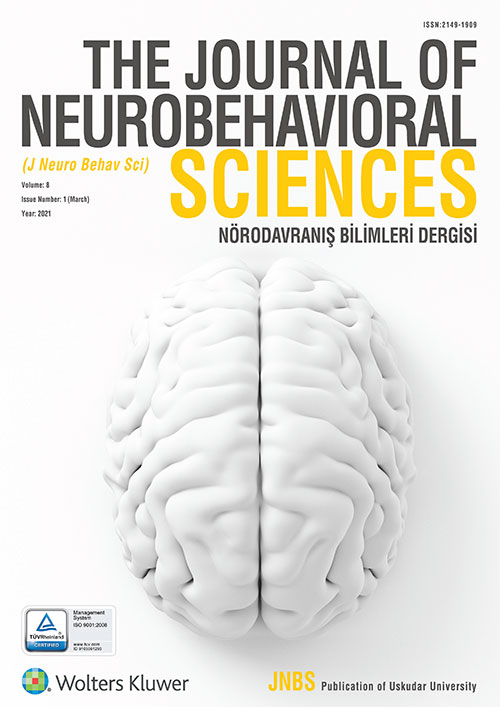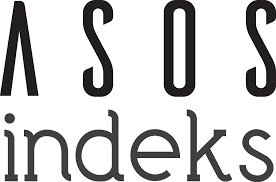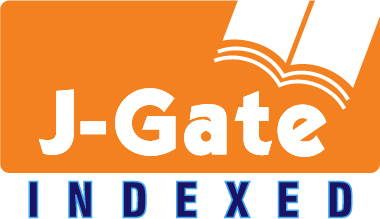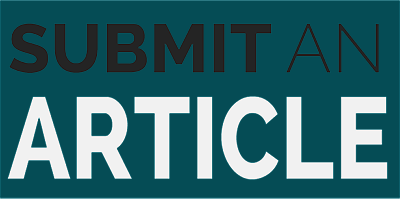Author Information
Author Information
The Journal of Neurobehavioral Sciences (JNBS) is the official, scientific and accessible publication of Üsküdar University, which includes original works in all areas of Neuroscience.
All submitted texts / manuscripts are reviewed in detail by our editorial staff, which consists of distinguished researchers and contributes to our journal by allocating valuable time. It is an honor for us to invite distinguished scientists / people like you to publish their quality work as text / article to support the global science community.
JNBS is currently indexed in Index Copernicus, Cite Factor, Türk Psikiyatri Dizini, J-Gate, Root Indexing and similar national and international databases. Besides, evaluation process of other prestigious international databases and catalogs is going as well.
The Journal of Neurobehavior Sciences is being prepared and published free of charge. All publication and printing costs are covered by Üsküdar University Press and Human Values and Mental Health Foundation sponsorship.
Texts accepted three weeks prior to the printing date of the current issue will be published online immediately after acceptance. The journal is published in English, so the texts written in English are evaluated. A full text archive as well as detailed information about the authors and the magazine can be found on the journal's website: www.jnbs.org.
To send text, visit www.jnbs.org.
We look forward to your valuable participation and thank you in advance for your contributions.
Yours truly,
Editorial in Chief
K. Nevzat TARHAN
Contact Person
Huseyin Ozan Tekin, PhD
Co-Editor, Journal of Neurobehavioral Sciences
Uskudar University
Altunizade Mh., Haluk Türksoy Sk No:14,
İstanbul-Turkey
Submission
Prior to submission, please carefully read and follow the submission guidelines detailed below. Manuscripts that do not conform to the submission guidelines may be returned without review.
Submit manuscripts electronically (.doc format with including all figures inside) via our online submission system: www.jnbs.org or http://my.ejmanager.com/nidsab/
General correspondence may be directed to the Editor's Office.
In addition to postal addresses and telephone numbers, please supply electronic mail addresses and fax numbers, if available, for potential use by the editorial and production offices.
Masked Reviews
Masked reviews are optional and must be specifically requested in the cover letter accompanying the submission. For masked reviews, the manuscript must include a separate title page with the authors' names and affiliations, and these ought not to appear anywhere else in the manuscript.
Footnotes that identify the authors must be typed on a separate page.
Make every effort to see that the manuscript itself contains no clues to authors' identities.
If your manuscript was mask reviewed, please ensure that the final version for production includes a byline and full author note for typesetting.
Similarity Rate
The similarity of the submitted articles with the Ithenticate program is determined. The similarity rate should be below 25%.
Types of Articles
- Brief Reports, commentaries, case reports and mini-reviews must not exceed 4000 words in overall length. This limit includes all aspects of the manuscript (title page, abstract, text, references, tables, author notes and footnotes, appendices, figure captions) except figures. Brief Reports also may include a maximum of two figures. For Brief Reports, the length limits are exact and must be strictly followed.
- Regular Articles typically should not exceed 6000 words in overall length (excluding figures).
- Reviews are published within regular issues of the JNBS. Reviews typically should not exceed 10000 words (excluding figures)
Cover Letters
All cover letters must contain the following:
- a statement that the material is original — if findings from the dataset have been previously published or are in other submitted articles, please include the following information:
- Is the present study a new analysis of previously analyzed data? If yes, please describe differences in analytic approach.
- Are some of the data used in the present study being analyzed for the first time? If yes, please identify data (constructs) that were not included in previously published or submitted manuscripts.
- Are there published or submitted papers from this data set that address related questions? If yes, please provide the citations, and describe the degree of overlap and the unique contributions of your submitted manuscript.
- the full postal and email address of the corresponding author;
- the complete telephone and fax numbers of the same;
- the proposed category under which the manuscript was submitted;
- a statement that the authors complied with APA ethical standards in the treatment of their participants and that the work was approved by the relevant Institutional Review Board(s);
- whether or not the manuscript has been or is posted on a web site;
- that APA style (Publication Manual, 6th edition) has been followed;
- the disclosure of any conflicts of interest with regard to the submitted work;
- a request for masked review, if desired, along with a statement ensuring that the manuscript was prepared in accordance with the guidelines above.
Authors should also specify the overall word length of the manuscript (including all aspects of the manuscript, except figures) and indicate the number of tables, figures, and supplemental materials that are included.
Manuscript Preparation
Prepare manuscripts according to the Publication Manual of the American Psychological Association (6th edition).
Review APA's Checklist for Manuscript Submission before submitting your article.
Double-space all copy. Other formatting instructions, as well as instructions on preparing tables, figures, references, metrics, and abstracts, appear in the Manual.
Below are additional instructions regarding the preparation of display equations and tables.
Display Equations
We strongly encourage you to use MathType (third-party software) or Equation Editor 3.0 (built into pre-2007 versions of Word) to construct your equations, rather than the equation support that is built into Word 2007 and Word 2010. Equations composed with the built-in Word 2007/Word 2010 equation support are converted to low-resolution graphics when they enter the production process and must be rekeyed by the typesetter, which may introduce errors.
To construct your equations with MathType or Equation Editor 3.0:
- Go to the Text section of the Insert tab and select Object.
- Select MathType or Equation Editor 3.0 in the drop-down menu.
If you have an equation that has already been produced using Microsoft Word 2007 or 2010 and you have access to the full version of MathType 6.5 or later, you can convert this equation to MathType by clicking on MathType Insert Equation. Copy the equation from Microsoft Word and paste it into the MathType box. Verify that your equation is correct, click File, and then click Update. Your equation has now been inserted into your Word file as a MathType Equation.
Use Equation Editor 3.0 or MathType only for equations or for formulas that cannot be produced as Word text using the Times or Symbol font.
Tables
Use Word's Insert Table function when you create tables. Using spaces or tabs in your table will create problems when the table is typeset and may result in errors.
Abstract and Keywords
All manuscripts must include an english abstract containing a maximum of 250 words typed on a separate page. After the abstract, please supply up to five keywords or brief phrases.
References
List references in alphabetical order. Each listed reference should be cited in text (Name.Year style) , and each text citation should be listed in the References section.
In-text citations
- For two or fewer authors, list all author names (e.g. Brown & Tas, 2013). For three or more authors, abbreviate with ‘first author’ et al. (e.g. Uzbay et al., 2005).
- Multiple references to the same item should be separated with a semicolon (;) and ordered chronologically. References by the same author in the same year should be differentiated by letters (Smith, 2001a; Smith, 2001b).
- Cite articles that have been accepted for publication as 'in press', include in the reference list.
- Cite unpublished work, work in preparation, or work under review as 'unpublished data' using the author's initials and surname in the text only; do not include in the reference section
The Reference section:
- Journal Article:
Hughes, G., Desantis, A., Waszak, F. (2013). Mechanisms of intentional binding and sensory attenuation: The role of temporal prediction, temporal control, identity prediction, and motor prediction. Psychological Bulletin, 139, 133–151. http://dx.doi.org/10.1037/a0028566 - Authored Book:
Rogers, T. T., & McClelland, J. L. (2004). Semantic cognition: A parallel distributed processing approach. Cambridge, MA: MIT Press. - Chapter in an Edited Book:
Gill, M. J., & Sypher, B. D. (2009). Workplace incivility and organizational trust. In P. Lutgen-Sandvik & B. D. Sypher (Eds.), Destructive organizational communication: Processes, consequences, and constructive ways of organizing (pp. 53–73). New York, NY: Taylor & Francis.
Figures
Graphics files (at least 300 dpi) are welcome if supplied as Tiff, EPS, or PowerPoint files. Multipanel figures (i.e., figures with parts labeled a, b, c, d, etc.) should be assembled into one file.
The minimum line weight for line art is 0.5 point for optimal printing.
Ethical Principles
Authors are required to state in writing that they have complied with the Declaration of Helsinki Research Ethics in the treatment of their sample, human or animal, or to describe the details of treatment.
About Keywords
The authors have to list at least three, but no more than six keywords below the abstract. Preferably use terms from the ‘Medical Subject Headings’ (http://www.nlm.nih.gov/mesh/MBrowser.html) list from Index Medicus.
| ISSN (Print) | 2149-1909 |
| ISSN (Online) | 2148-4325 |
2020 Ağustos ayından itibaren yalnızca İngilizce yayın kabul edilmektedir.

